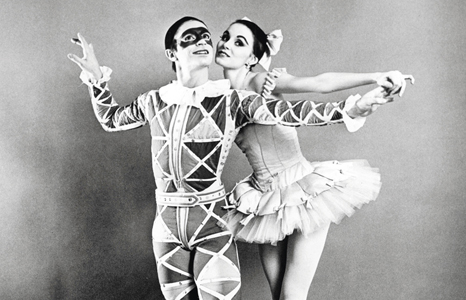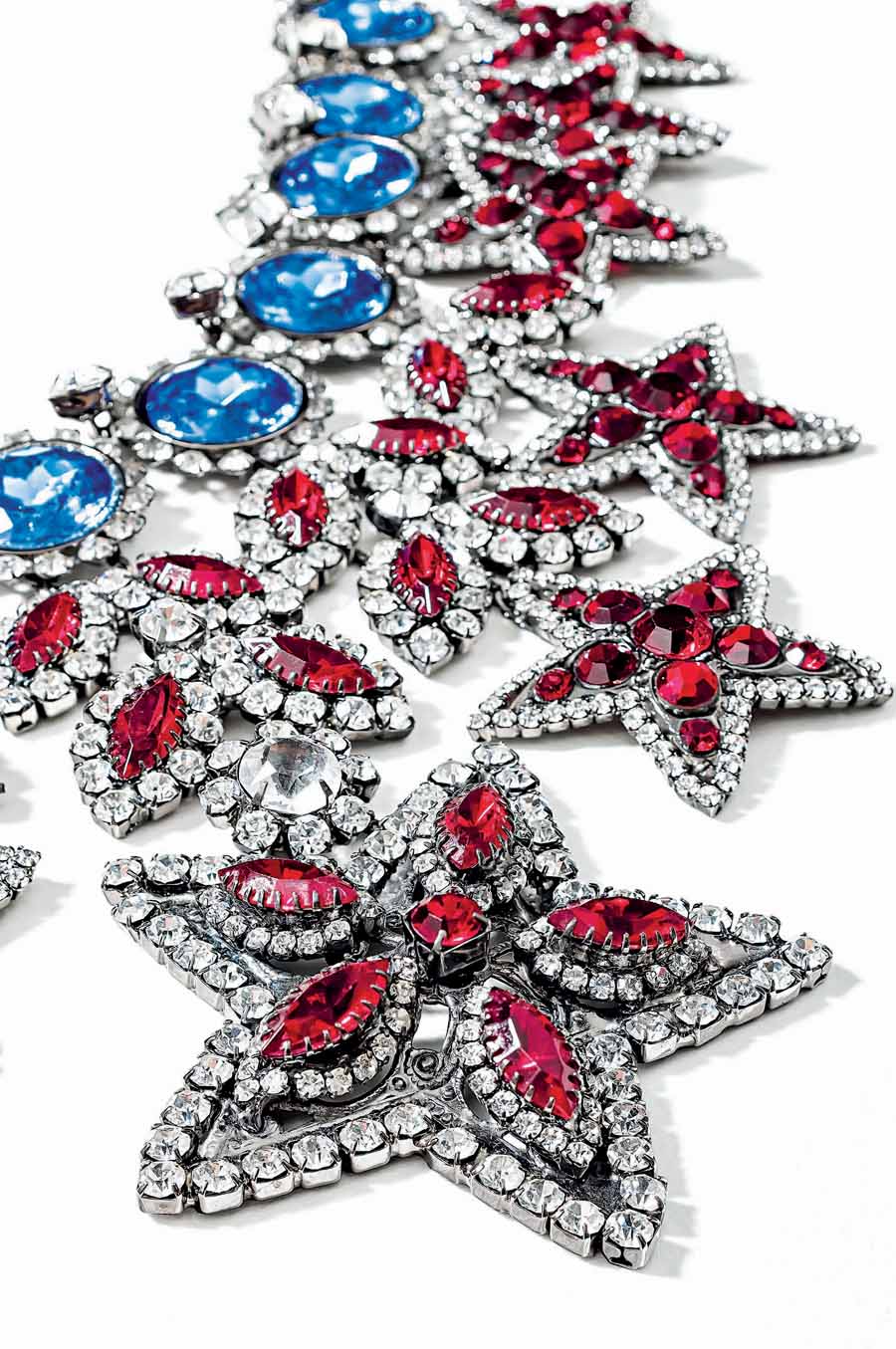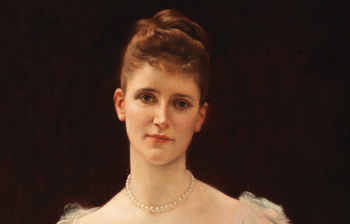By Ronni Diamondstein
The Prodigal Son has always resonated deeply with Edward Villella. It was one of his greatest roles at the New York City Ballet, in George Balanchine’s spare but moving choreography. It was the title of his 1992 autobiography. And in a sense, it is a metaphor for the present chapter of his life, for like the Biblical character, he has come full circle, back to the place where he started and has been greatly loved. He has come home.
And as with the Prodigal Son, the return has been preceded by a rough patch that tested him. As most culture-watchers are aware, Villella – one of the greatest dancers of the 20th century, who brought an American athleticism, virility and sheer guy-ness to the art of the danseur – left the Miami City Ballet last year. Some say that after founding the company in 1986 and building it into an institution with an international reputation, he was forced out in a power struggle with its board.
Villella spoke candidly to WAG about his departure last year, which had the dancers and the founding artistic director alike in tears.
“We are subject to boards; they are local unto themselves; and as an artistic director you have knowledge of that. It was a clean canvas and a major opportunity to bring New York-style culture to Florida. …But I found out there was a Miamian way.”
Looking back on that time is still bittersweet.
“I miss the dancers. They grew up with me, and I grew up with them.”
Nonetheless, Villella is proud of the troupe and what it was able to do. “I left with the pleasure of having achieved something.” And, he adds, “I am thrilled to be back to the culture, the energy and vitality (of New York). You know what they say, ‘If you can make it here, you can make it anywhere.’”
He’s proved that once again, choreographing “Reveries” for Ice Theatre of New York recently.
His dream
“Choreographically, Mr. Villella’s ‘Reveries’ was a cut above everything else on the program, which also included premieres by Charles Klapow and Ice Theatre’s artistic director, Douglas Webster,” Brian Seibert wrote in his New York Times’ review. “‘Reveries,’ made with translation help from Mr. Webster, is set to the ‘Élégie’ from Tchaikovsky’s Suite No. 3, a suite famously choreographed by Mr. Villella’s old boss, George Balanchine. Beyond a few direct quotations, ‘Reveries’ is saturated in Balanchine. Its subject is the elusive muse. … At the end, (Kim) Navarro is raised, seemingly unattainable, and (Brent) Bommentre, apart, turns away. Yet, by turning to Mr. Villella, Ice Theatre has narrowed the gap between its skilled skaters and that elusive muse, Terpsichore.”
A confluence of events steered Villella in this direction. His wife, Linda Carbonetto – a former Canadian national figure-skating champion whom he met while choreographing an ice ballet for a 1977 Dorothy Hamill TV special – took a class at the Sky Rink at Chelsea Piers where the Ice Theatre of New York performs. Two-time Olympic gold medalist and North Salem resident Dick Button, with whom he’s also collaborated, approached him about choreographing a piece for Ice Theatre of New York.
“It was a wonderful challenge,” Villella says.
Indeed, choreographing for skaters is different from choreographing for dancers. Skating is both art and sport, where the preparation for jumps is more evident and where the extension of the line of the body is hampered by an inflexible skate boot.
“The greatest challenge for me was the vocabulary,” Villella says. “We found a way to communicate through gestures and words.”
Working closely with Webster, with whom he “hit it off from the start,” Villella diagrammed “Reveries,” then went with the skaters to Sun Valley, Idaho, for a workshop performance.
In the end, he says, “the storytelling transcended the steps, which was fascinating.”
Baseball to ballet
It’s fitting that Villella’s latest work should bridge art and sport. It’s something he’s always done. Growing up a rough and tumble kid in Bayside, Queens, the bully on the block, he got hit in the head at age 9 playing baseball.
When Villella’s mother found him unconscious on their doorstep, she realized she couldn’t leave her son unsupervised while she took his sister to ballet class. Little Eddie would have to go along. Not one to sit still, he soon was drawn in to the activity of the little girls.
“I was a very physical kid and liked the jumping, so I joined them one day,” Villella recalls. “I found I could do it.”
Humiliated by the guys on his block for taking ballet lessons, he wore his baseball uniform to dance class. But before long, Villella entered the City Ballet-affiliated School of American Ballet. He wasn’t done with sports, though. He earned a bachelor of science degree at SUNY Maritime College in the Bronx, lettering in baseball and becoming a championship boxer. In 1957, he returned to the School of American Ballet and was invited to join the City Ballet, where he soon became a soloist and then a principal dancer in 1960.
At the City Ballet, which Balanchine founded with Lincoln Kirstein in the 1940s, Balanchine and also Jerome Robbins were creating American styles of dance that required a new breed of dancer – fast, playful, sexy and capable of capturing thought, theatricality and emotion in movement. With his compact, muscular physique, dark good looks and particular blend of grace and power, Villella fit right in, creating indelible impressions in the “Rubies” section of “Jewels,” the lead in “Harlequinade,” Oberon in “A Midsummer Night’s Dream” and perhaps most famously the title character in “Prodigal Son.”
“I didn’t grow up a prince among royalty,” Villella says. “I grew up as an athlete and had the natural inclination to move in that way so Balanchine worked with my natural ability. I was in a wonderful place at a wonderful time.”
One that afforded him the opportunity to observe Balanchine’s and Robbins’ complementary styles.
“Balanchine was prepared, anytime, any place. Musically it was all in his head. And you would start with the steps.”
As for Robbins who cast him as the boy in the ballet studio in an updated “Afternoon of a Faun,” Villella says, “He had a different point of departure, calculated and very structured. Working with two geniuses under the same roof was one of the greatest moments in history.”
Though he says he is no prince, Villella could certainly play one, like the Nutcracker Prince in a TV version of “The Nutcracker” that also featured his frequent dance partner Patricia McBride. He even spoofed his baseball-ballet roots appearing as himself dancing Prince Siegfried in a student production of “Swan Lake” in a classic episode of TV’s “The Odd Couple.”
Such appearances reminded audiences that this ruby of a dancer – whom injury forced from the stage for good in 1975 – was always willing to transcend the rarefied heights of ballet to mix it up with us mere mortals.
“I’ve had a wonderfully satisfying time. I’m thrilled to be able to make contributions in whatever way I can based on my background and place in history. My favorite word is ‘explore,’ and this is what I am going to do.”




Wonderful and insightful article!